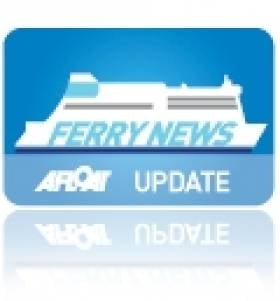Displaying items by tag: Seatruck Ferries
Foot-Passengers to Lose Liverpool Link
Closure of the Birkenhead route will see the withdrawal of the 21,856 grt Italian built sister-ships Dublin Seaways and Liverpool Seaways. There are a number of options being investigated as to where the ro-pax pair will go, they may be deployed on other DFDS Seaways routes or placed on a sale charter arrangement.
In addition the Danish-owned shipping company is to close the freight-only Dublin-Heysham route this month. The route is served by the 13,074 grt Anglia Seaways which has a 114-trailer capacity. The vessel is due to be transferred to the Baltic Sea, according to DFDS Seaways which also operates an extensive route network in the North Sea.
Unlike DFDS Seaways use of the double river-berth terminal at Birkenhead, on the Wirral Peninsula, P&O and Seatruck vessels navigate through locks into the extensive Liverpool Docks system. Interestingly all three operators use sister-ships with P&O running the Dutch built ro-pax's Norbank and Norbay and Seatruck Ferries Spanish built Clipper Pace and Clipper Pennant.
Vacancy at Seatruck Ferries
Seatruck Ferries, the only Irish Sea ferry company, dedicated solely to the carriage of freight, are looking to appoint a Group Operations Manager. The position is based in their Heysham office in Cumbria. In addition the appointment would require regular travel to Seatruck's other terminals on both sides of the north Irish Sea.
The company operates the Dublin-Liverpool, Warrenpoint-Heysham and Heysham-Larne routes which are served by an eight-strong fleet. In recent years four Spanish built newbuilds were commissioned into service on the Dublin-Liverpool and Warrenpoint-Heysham routes. Each newbuild has a 120 freight unit capacity.The remaining four vessels where built in 1998 and they can each handle 65 freight units.
Seatruck's Dublin Port operations is located at the Alexandra Basin terminal close to the East-Link Toll-Lift Bridge and the Point Village.
To find out more about the vacancy (including PDF) logon HERE and in general about the company click www.seatruckferries.com The closing date for applications is 31 January.
























